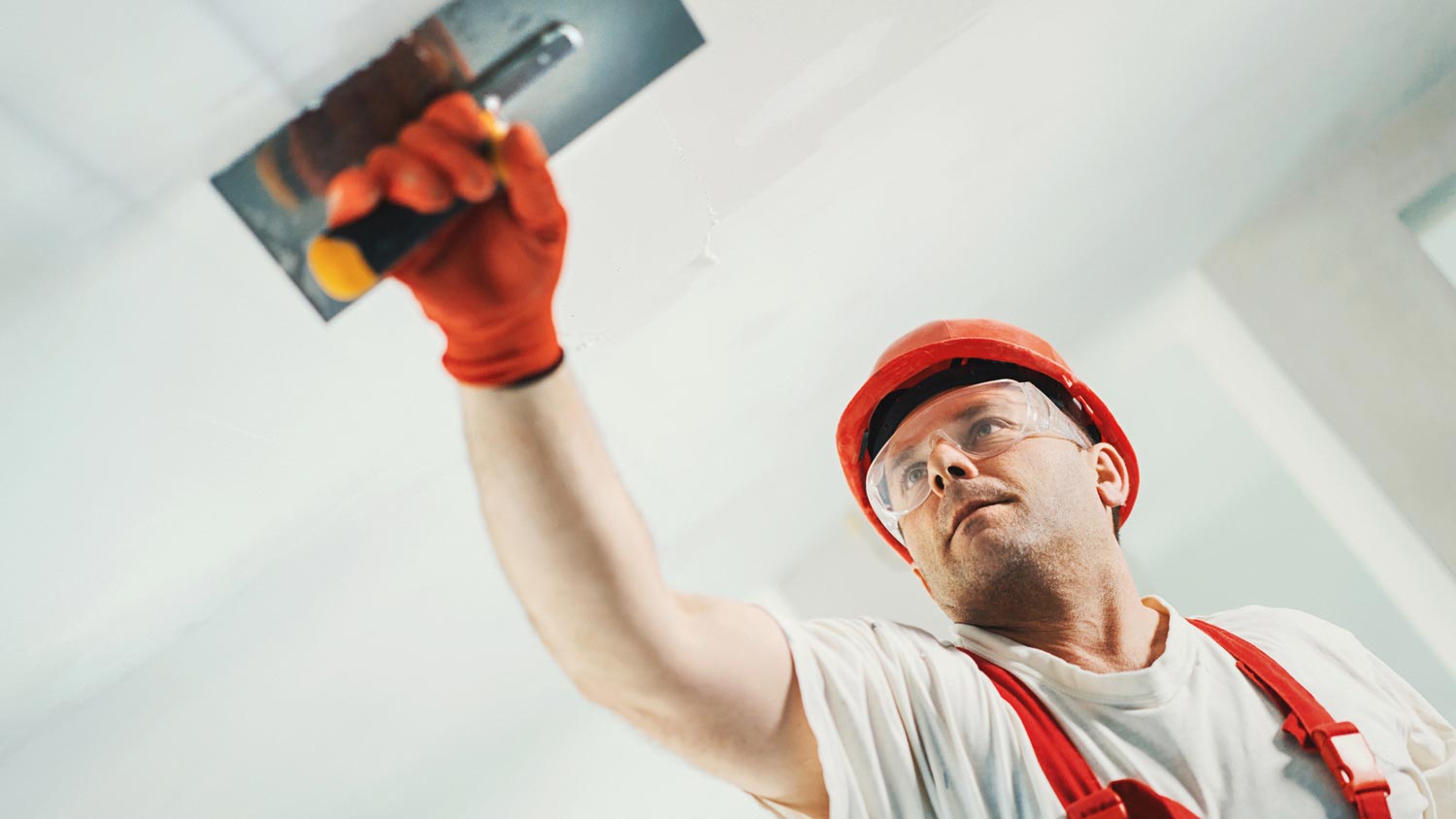
Skim coating drywall is a great alternative to replacement, and is often more affordable. Use this guide to estimate the cost to skim coat walls in your home.
Get a little extra support for your repairs with this lightweight material


Use a mesh drywall patch when repairing small holes or cracks in drywall.
Drywall mesh reinforces the repair, making it stronger and longer-lasting.
You’ll need to coat the mesh patch with joint compound for a smooth finish.
Drywall mesh is a thin, flexible material used to patch drywall. The mesh lends stability and support to the patched area, helping improve durability.
Mesh patches for drywall are made of fiberglass, steel, or aluminum. Some patches are self-adhesive, meaning that they’ll stick to the wall on their own. You can also get mesh in a roll, known as mesh tape.

Mesh patches offer several benefits, including reinforcing holes, smoothing damaged surfaces, adding strength, and ensuring longevity.
Nails and screws can leave tiny holes in your drywall that can be spackled over easily. But larger holes, dents, and cracks, like you might get from a doorknob or a sharp corner of furniture, require a more substantial repair.
Without a mesh drywall patch, your repair might show signs of the hole or dent beneath. A drywall patch provides an even, smooth surface that bridges the gap of a crack, hole, or dent.
Considering that a standard sheet of drywall weighs between 50 and 90 pounds, it makes sense that large holes would need some extra reinforcement. It’s especially important to reinforce your drywall repair if you intend to hang anything around the damaged area.
Using a drywall mesh patch ensures that your repair will stand up over time rather than crumbling or cracking.
Make sure to use drywall mesh instead of paper tape when repairing areas where drywall might get wet, such as bathrooms and kitchens. Drywall mesh is water resistant, but paper drywall tape is not.
You should use a mesh drywall patch when repairing small holes (just a few inches wide) in drywall. You can find drywall mesh patches in the following common sizes:
4 inches by 4 inches
6 inches by 6 inches
8 inches by 8 inches
12 inches by 12 inches
Remember that the patch should be larger than the hole by at least an inch on all sides so that it has room to seal to the drywall around the edges.
In some cases, a mesh drywall patch won’t be the right solution for your drywall repair.
Repairing large holes: For larger holes, a mesh patch won’t provide enough reinforcement. In these instances, you should make straight, square cuts around the hole and fit a new piece of drywall in place, taping and mudding the seams.
Drywalling inside corners: When drywall butts up against a wall, paper drywall tape will be easier to work with than mesh since you can fold the tape to fit snugly inside corners.
Drywalling outside corners: If your repair is on an outside corner, metal corner beads will be a better solution than a mesh drywall patch.
Drywall and plaster work require extensive practice and talent. You can try a DIY repair if a patch is small enough or where you won’t mind looking at a less-than-professional job when it’s done. If an entire wall needs repair, trust the pros to do the work so you're happy with the results.
Using a mesh drywall patch works a little differently than spackling tiny nail holes. You’ll want to use joint compound, not spackle, for drywall repairs with a mesh patch. Some drywall patch kits include a small amount of lightweight joint compound for the job.
You’ll apply the patch over the hole (for self-adhesive varieties), then coat it with a thin layer of joint compound. Allow the joint compound to dry overnight, then add a second thin coat. Let the second coat dry and then add a third coat. When the third layer is dry, you can sand the patched area to be flush with the rest of the wall and then prime and paint as normal.
Drywall repairs can be tricky, so if you’re having problems or you’d rather not give up your weekend waiting for joint compound to dry, find a local drywall repair pro to help.
From average costs to expert advice, get all the answers you need to get your job done.

Skim coating drywall is a great alternative to replacement, and is often more affordable. Use this guide to estimate the cost to skim coat walls in your home.

Pre-drywall inspection costs vary depending on the home size, build complexity, and reporting you receive. Estimate your budget with this cost guide.

Installing drywall is the most common way to finish your home’s interior. Use this drywall installation cost guide to see what your project is likely to cost.

Looking to add some texture to your walls for a unique finish? Use this guide to estimate skip trowel texture cost to see if it’s the right option for you.

Drywall is one of the most important things to get right during home renovations. Use this guide to figure out what type of drywall is best for your project.

Looking for the best moisture-resistant drywall for your next home project? Compare purple drywall vs. green drywall to narrow down your search.